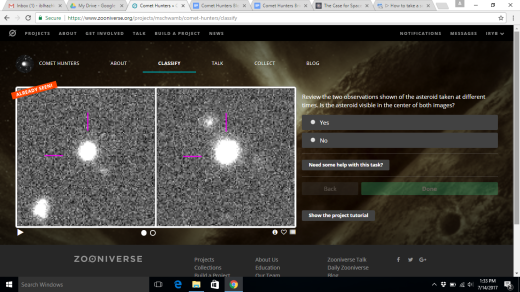by Joseph Berry III
Zooniverse is a website in which many people can explore many different projects of many different subjects that others have created due to their interests in the subject. Exploring these projects and using them can increase your interest in certain subjects and even help out the creators’ research. The Zooniverse project I chose is called Exoplanet Explorers, where you can learn more about a process of finding other exoplanets orbiting discovered stars. This project has plenty of information and it will help increase your interest in exoplanets and the ways they are discovered.
The project finds and uses data based on the change in brightness of stars over time to determine whether or not a planet is orbiting the star. In the project, you can look at different pieces of data and graphs (known as lightcurves), and based on their content you choose whether or not that star seems like it could have a transiting planet. For example, if a lightcurve graph has multiple dips or too many points, then that graph can’t be used as solid proof that the star has an orbiting planet.
This team behind Exoplanet Explorers is trying to find exoplanets by measuring stars brightnesses overtime to gather more data about exoplanets, so they can find comparisons and contrasts from them (according to the project’s about section). If a lightcurve has one dip at “phase 0” and no more, then it’s fairly likely that the star the lightcurve is based on has a planet orbiting around it. The project is trying to find more lightcurves with this description, and this project lets you help with that, by showing you lightcurves for different stars, and letting you choose whether or not they seem similar to the description previously mentioned.
This project gives plenty of information as to what makes an accurate lightcurve and what doesn’t. The project explains how this method for finding exoplanets works, and the terms used in the method well. The project, while seeming to have little content at first glance, actually taught me plenty of new things about this subject, and made me more interested in exoplanets overall.
I think that this project is very well put together and well organized. In fact, it does so well that their volunteers have done over one million of classifications, and from these the team behind the project have discovered over 100 possible exoplanets! They have many volunteers classifying possible exoplanets every day, and they have a huge page in the about —> team section dedicated to thanking all of the volunteers, of which there are thousands of. They have plenty of content and information in this project, and I can tell that they put a lot of time and effort into this project. Exoplanet Explorers is a very useful project if you want to learn about a method of exoplanet hunting, or if you want to participate in helping the team find potential planets.

